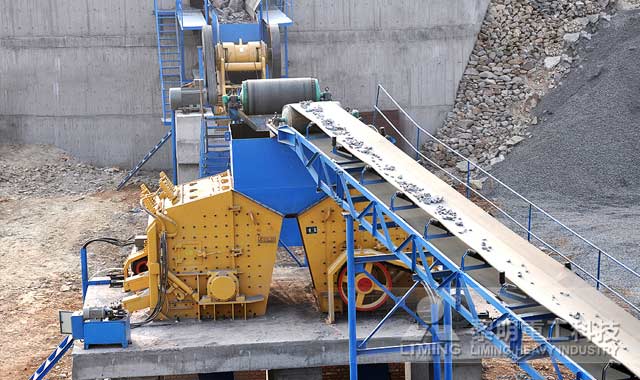A crusher is a vital equipment in the mining and construction industries that is used to reduce the size of large rocks, gravel, or rock dust into smaller pieces. Crushers play a crucial role in various crushing stages, from initial size reduction to the final stage of product creation. Different types of crushers are designed for specific tasks, making them suitable for various crushing stages. Let’s explore the types of crushers suitable for different crushing stages.

Primary Crushers:
Primary crushers are heavy-duty machines designed to break large-sized rocks into smaller pieces. The main types of primary crushers include jaw crushers and gyratory crushers. Jaw crushers are commonly used in mining and recycling applications, and they excel at breaking down large rocks into smaller, more manageable sizes. Gyratory crushers, on the other hand, are typically used in primary crushing as they can process large rocks and ores effectively.
Secondary Crushers:
Secondary crushers are used after primary crushers to further reduce the size of the material. They are designed to handle medium-hard to hard materials. Common types of secondary crushers include cone crushers and impact crushers. Cone crushers are used in secondary and tertiary applications where the feed material is relatively uniform and the goal is to create a fine product. Impact crushers, on the other hand, use the principle of quick impacts to crush the material and are used for materials with low abrasiveness.
Tertiary Crushers:
Tertiary crushers are used to produce the final product shape. They are used when the required final product needs to be fine and consistent in shape. Tertiary crushers often have a combination of cone crushers and impact crushers. These crushers produce a more finely crushed product and are ideal for producing high-quality end products in the construction industry.
Quaternary Crushers:
Quaternary crushers are used to further reduce the size of the material after the tertiary stage. They produce the final product shape and size required for specific applications. Quaternary crushers are not as common as primary, secondary, and tertiary crushers, but they play a crucial role in producing the final product in certain industries.
Each type of crusher has its own specific features and benefits, making it suitable for different crushing stages. When selecting a crusher for a specific application, it is essential to consider factors such as the material’s hardness, abrasiveness, and desired final product size and shape. Additionally, factors such as operational costs, maintenance requirements, and the initial investment should also be taken into account.
